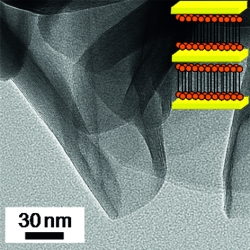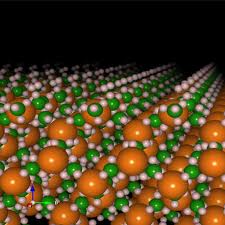Research Lines
 Lamellar Materials
Lamellar Materials
In the study of materials are identified different forms of classification in which different parameters are considered as, for example, the structure, the nature of the chemical elements or material properties. When the classification is based on the structure, highlight the extensive group of Layered Materials, which ranges from mineral species known and used long ago as graphite and clay, until the synthetic materials constituents of batteries for mobile phones and brand- steps.
When species such as atoms, ions or molecules enter the region between the laminated layers of material and its structure is preserved, it is said that there was a merge process. The material obtained is called intercalation compound and there are no restrictions on the nature of the species intercalated or intercalation mechanism.
 Intercalation Chemistry
Intercalation Chemistry
The intercalation chemistry offers versatility in terms of beat synthesis strategies when it is desired to obtain an organized nanoscale level so as to generate materials with properties of interest tecnológico.Embora scientific and application possibilities of the layered materials are notable and relevant only a few systems have reached the stage of large-scale processing. From a commercial standpoint, it identifies the application technological and industrial intercalation compounds as components in electrochemical devices (batteries of Li + Rechargeable, for example, in which the cathode and anode are layered materials having properties intercalation / interleaving) ; catalysts (or catalyst precursors) heterogeneous as for example, clays commercially designated K10 'Clayzic "(Zn2 +)" Clayfen "(Fe3 +) and" claycop "(Cu2 +); nanocomposites formed by modified clays (" organoclays " ) dispersed in synthetic organic polymers for use in the automotive industry and for the manufacture of packaging.
Our group has prepared materials containing organic species (such as alkylammonium ions, natural dyes derived from acai and annatto species interessse therapeutic polymers such as polyaniline, benzidine, chitosan and starch) and metal complexes (such as porphyrins and phthalocyanines metallated and copper complexes with ligands diimínicos) inserted into the pores of cationic clays, layered double hydroxides and lamellar niobates.
